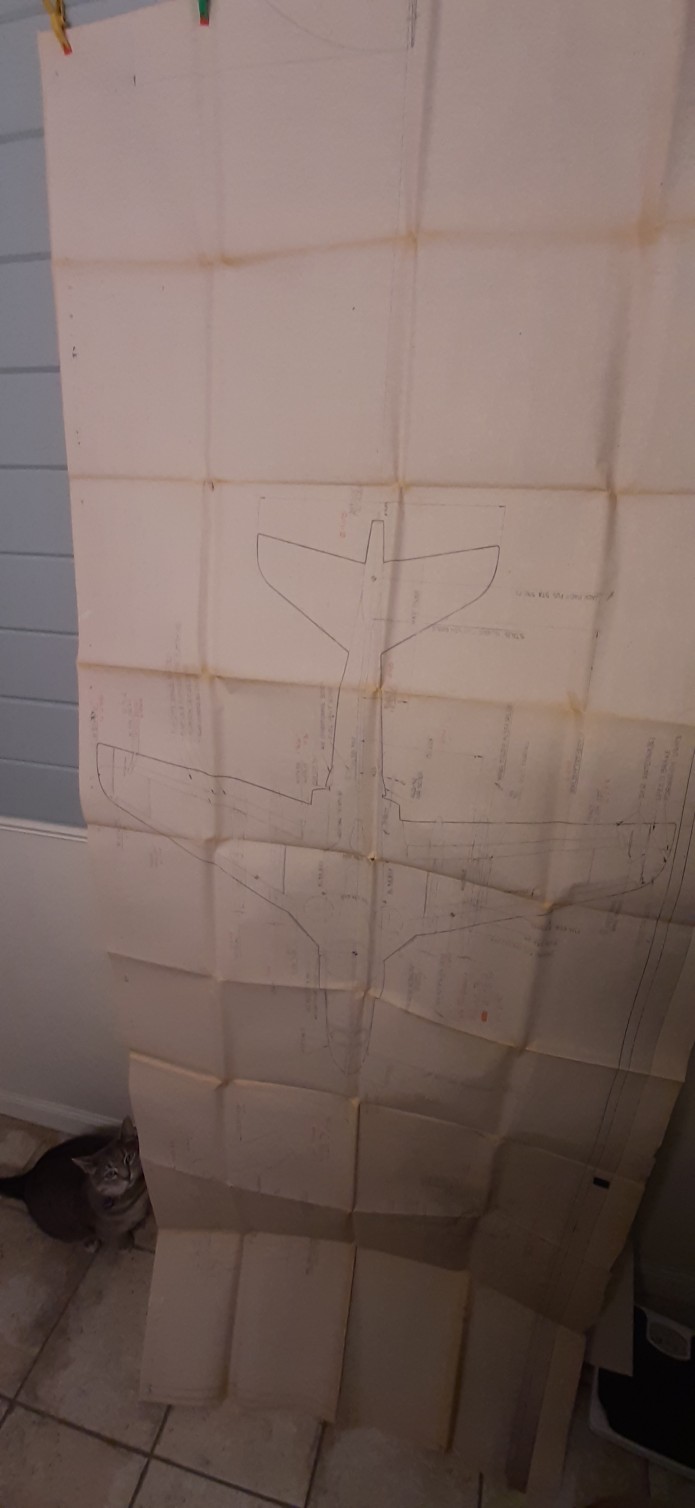A recent acquisition is this Grumman general arrangement diagram of the EA-6B “Prowler” electronic warfare aircraft. It’s about three feet wide and fifteen feet long, and has been stored folded for many decades. In order to scan it, it needed to be converted from “folded” to “rolled,” otherwise it won’t feed through the scanner. This is not a problem; there are several techniques that will safely flatten out old, brittle, folded paper like this. Some people like to iron paper; my own preference, visible here, is to hang the sheet in a bathroom and run a good hot shower. The paper is permitted to get slightly damp; this softens the paper and undoes the decades of folding. The paper is then rolled around a cardboard mailing tube. The end result is that the paper goes from complex curvature to simple curvature, and feeds smoothly through a large format scanner. The sheet has undergone the flattening process, with scanning to occur soon.
In this case, though, something further and dire might need to be done. I don;t know yet whether the scanning company can scan something this long, and at 300 DPI, it’s something that can’t be processed with most image programs (there is a limit just shy of 30,000 pixels, or ten feet at 300 DPI). if they *can* scan it, then I hope to have them chop the digital image into two; if they can’t scan it… I’ll probably slice the paper into two. Not something I normally approve of, but there is a *wide* gap in the paper between views, so the diagram itself will not be at risk, and the value of having the image scanned and immortalized it probably more important than having a giant intact sheet of rolled-up paper.
Note industry standard scale reference near the bottom.
